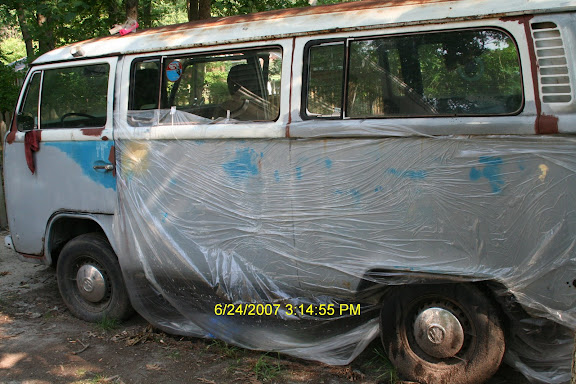In earlier posts, I had sanded, primered and painted the floor areas of my 1977 VW Bus.
Duplicolor make paint products and also makes a
Do it yourself truck bed liner / undercoat.
Truck bed liner- dries to a protective, hard covering.
Designed to be applied to areas where protection is needed- mainly truck bed liners.
It can be applied anywhere paint can be used, it has many uses.
I decided to use the truck bed liner on the floor of my bus, to protect, seal and insulate the floor.
I assume some level of additional structural integrity will occur.
It also is flexible and that will lend to insulation.
The floor will eventually be hardwood.
The hardwood floor will go nicely with wooden interior panels.
Here's some pictures of the truck bed liner in my bus.

The front cab floor was sanded, and primered with
Rustoleum Stop Rust primer paint.
Some images have text.
Click for larger images.
I also sanded and primered the rear cargo area.
I used
Rustoleum as well.


If you decide to use a Truck bed liner or an Undercoating product,
after the area has been sanded and primered, you have to sand
the area to be treated again. The truck/undercoat needs a "tooth,"
for the product to correctly adhere to.
Rough it up with a light sanding.
If the prepared area has any sheen or is shiny, rough it- using a fine grit sand paper
or a
3m red scuff pad. No sheen/shiny is good.
Your preparation should take longer than actually applying the product.

I got carried away and decided to do the front cab wall as well.
Insulation will be applied
to make the bus quiet and warm.

The fiberglass patch was there
when I got the bus. I'll leave it for now.
I decided to go thin with the coats.
I wasn't sure if I would like the results.
It would easier to remove thin coats, versus
a thick coat. You can add coats later.
I may do that.

It should be noted that I did not use the kit that's available. I bought a pint of the actual bed liner ($16.00) and a regular paint roller. I also used a regular paint roller sleeve. The foam roller style will disintegrate on use. I did use a foam touch-up brush to reach those hard to reach areas.
NOTE: wear gloves, this stuff is very hard to get off. It dries quickly, so working fast is good.
Be ready.








